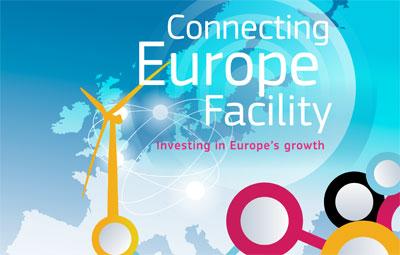
European Parliament backs new EU infrastructure policy
In the most radical overhaul of EU infrastructure policy since its inception in the 1980s, the European Parliament has today given final approval to new maps showing the nine major corridors which will act as a backbone for transportation in Europe's single market and revolutionise East–West connections. To match this level of ambition, Parliament also voted to triple EU financing for transport infrastructure for the period 2014–2020 to €26.3 billion.
Taken as a whole, the new EU infrastructure policy will transform the existing patchwork of European roads, railways, airports and canals into a unified trans-European transport network (TEN-T).
European Commission Vice-President Siim Kallas, responsible for transport, said: "Transport is vital to the European economy. Without good connections Europe will not grow or prosper. This new EU infrastructure policy will put in place a powerful European transport network across 28 Member States to promote growth and competitiveness. It will connect East with West and replace today’s transport patchwork with a network that is genuinely European."
The new EU infrastructure policy
The new policy establishes, for the first time, a core transport network built on nine major corridors: 2 North–South corridors, 3 East–West corridors; and 4 diagonal corridors. The core network will transform East–West connections, remove bottlenecks, upgrade infrastructure and streamline cross-border transport operations for passengers and businesses throughout the EU. It will improve connections between different modes of transport and contribute to the EU's climate change objectives. The core network is to be completed by 2030.
Financing for transport infrastructure will triple for the period 2014–2020 to €26.3 billion. This EU funding will be tightly focused on the core transport network where there is most EU added value. To prioritise East–West connections, almost half the total EC transport infrastructure funding (€11.3 billion from the "Connecting Europe Facility", or CEF) will be ring-fenced only for cohesion countries.
The new core transport network will be supported by a comprehensive network of routes, feeding into the core network at regional and national level. The comprehensive network, will ensure full coverage of the EU and accessibility of all regions. The aim is to ensure that progressively, and by 2050, the great majority of Europe's citizens and businesses will be no more than 30 minutes' travel time from this comprehensive network.
Taken as a whole, the new transport network will deliver:
- safer and less congested travel
- smoother and quicker journeys.
The €26.3 billion (current prices) allocated to transport under the Connecting Europe Facility (CEF) of the MFF (multi-annual financial framework) will effectively act as "seed capital" to stimulate further investment by Member States to complete difficult cross-border connections and links which might not otherwise get built. It is estimated that the cost of implementing the first financing phase for the core network for 2014–2020 (see attached list of projects) will cost €250 billion. The core network is to be completed by 2030.
The new core network – the figures
The core network will connect:
- 94 main European ports with rail and road links
- 38 key airports with rail connections into major cities
- 15,000 km of railway line upgraded to high speed
- 35 cross-border projects to reduce bottlenecks
This will be the economic lifeblood of the single market, allowing a real free flow of goods and people around the EU.
For more information:
One trillion euro to invest in Europe's future – the EU's budge [IP/13/1096]
A map of the core TEN-T (Trans-European Transport Network) and the nine major corridors
Clip (24 MB)
TEN-t Core Network Corridors (20 MB)
Details
- Publication date
- 22 September 2016
- Author
- Directorate-General for Mobility and Transport
